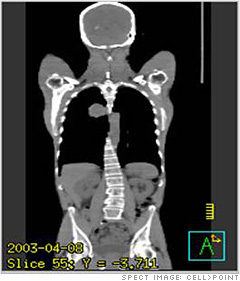
Cell>Point
Centennial, Colo.
Greg Colip had a comfortable life as a Houston attorney specializing in the oil-and-gas industry. He never thought he'd become an expert in cancer screening. That changed when a friend arranged a quick chat with Jerry Bryant, a local scientist, in a hotel lobby. That led to the creation of Cell>Point, a company that plans to deliver a cheaper and more effective way to detect tumors in 2010.
Doctors rely on positron-emission tomography (PET) scans to see tumors. But PET machines cost more than $2.5 million apiece and are usually found only in major medical centers. Bryant's employer, MD Anderson Cancer Center in Houston, had developed a chemical that could light up a tumor on a common SPECT (single photon emission computed tomography) camera. He wanted Colip, 62, a pharmaceutical industry veteran, to help turn it into a product.
"We knew we were onto something special," says Colip.
More affordable at $800,000 or less, SPECT cameras are found in six times as many U.S. hospitals as PET scanners. Better yet, Cell>Point's isotope uses 70% less radiation than PET isotopes and should cost about half as much -- about $800 per scan.
Another bonus: Doctors could determine earlier whether a cancer treatment was working -- within about two weeks, instead of up to five months with PET scans.
Cell>Point "could have a very nice role to play in monitoring therapy," says Michael O'Connor, professor of radiologic physics at the Mayo Clinic in Rochester, Minn. To fund the costly FDA approval process, Cell>Point has raised $33 million from small investors -- mostly doctors. -Jennifer Alsever
More galleries
